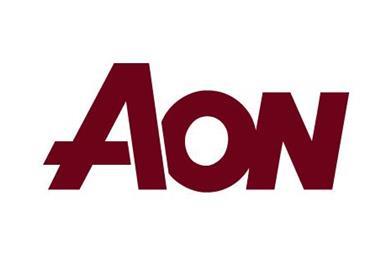The aftermath of the financial crisis coupled with ever increasing life expectancy has put some of the UK’s biggest pension pots into freefall. With total deficits hitting around £2bn at RBS and £613m at Aviva, what are insurance firms doing to plug the hole?
It makes for stark reading: UK pension scheme deficits of FTSE-100 companies have more than doubled since the onset of the financial crisis, and now stand at an eye-watering £96bn.
A year ago that figure stood at £41bn, according to the 16th annual ‘Accounting for Pensions’ report from Lane Clark & Peacock (LCP). The current deficit is the largest shortfall recorded under IAS19 accounting standards. IAS19 is used internationally, except in the US, and specifies how to calculate benefits (including pensions) on company balance sheets.
Some relatively good news, however: the deficits experienced by FTSE-100 insurers are generally not as high as others in the index, such as BT Group, whose deficit has reached £2.9bn. That said, insurance companies are not immune to large holes in their final salary pension pots (see table, right).
To make matters worse, firms’ negative figures may be just the tip of the iceberg owing to the complex way pension deficits are calculated (see box, ‘The deficit blame game’).
“If you look at it from the point of view of how much trustees from those pension funds will be asking for, [the deficit] could be even more,” LCP?partner Bob Scott says. He warns that, if nothing is done, it could have a major impact on firms’ ability to pay dividends and invest money back into the business. “This is a serious issue for companies that have DB (defined benefit) schemes. They are required by law to take action, so they can’t just ignore them and hope the market goes back up,” he says.
A DB scheme is an occupational pension which is calculated as a proportion of the member’s salary. The benefits are guaranteed upon retirement by the employer.
Tackling the problem
How could things have spiralled so out of control? The main cause, of course, is the financial crisis. Pension funds invested heavily in equities and, when markets slumped, the funds suffered. But Scott points out that it’s easy to blame investment strategies in hindsight. “We are not saying the investment strategy was wrong; it’s just that it didn’t work in the financial downturn. But there are other factors too, such as the fact that people are living longer so companies have to set aside more money to pay more pension. All of that adds to the pressure.”
LCP also blames companies for not paying sufficient attention to pension risks. It found that while 46% of FTSE-100 companies identify pensions as a key risk to their business, only 17% have a set policy in dealing with it.
In the wake of the financial crisis, companies have adopted various strategies to cope with their deficits. Most don’t offer DB schemes to new employees anymore. Of those in the FTSE 100, only Cadbury, Diageo and Tesco do.
In some cases, companies have put in extra funds to top up the pensions, and employees haven’t had to do a thing. Others have told employees that they can’t afford the schemes and that they will lower benefits or freeze them. Some say they will honour the benefits, but that going forward they won’t put any money into the final salary scheme. Instead, they will provide employers with a contribution that they would have to manage themselves within a defined contribution (DC) scheme.
DC schemes are also occupational pensions but instead of the company being responsible, the onus falls on the member to make the right investment choices.
RSA, however, adopted a different method when addressing its pension risk. Last month, the insurer announced that it conducted a pension buy-out deal with Rothesay Life, a subsidiary of Goldman Sachs. Essentially, Rothesay Life took on £1.9bn of RSA’s pension risk in return for an undisclosed premium. The deal covers 55% of the remaining members of RSA’s final pension scheme, which is closed to new members. The benefit for RSA is that it need only pay a known fixed sum back to Goldman Sachs, while its counterparty takes the risk and responsibility of paying pensioners until death.
Compared to this, the £32m deficit that Lloyd’s reported at the end of 2008 appears small. Luke Savage, director of finance risk management and operations, says there were two reasons for the dramatic swing from when Lloyd’s posted a £16.5m surplus, in December 2007. “First is the fall in stock markets: most pension schemes have a large exposure to equities,”he explains. “On the other side, the fall in interest rates means the liabilities that the scheme has for future pensions is worth more in today’s terms.”
Still, it was enough to prompt Lloyd’s to inject a £15m lump sum into the scheme last year. This follows measures of introducing employee contributions and increasing the minimum retirement age from 60 to 65 for joiners.
Cruel to be kind
It’s not only final salary schemes that companies are struggling to cope with in terms of costs and contributions. Aon, which employs about 5,000 staff in the UK, announced in April that it would reduce its pension contributions to save costs of its DC schemes. It said that pension schemes for employees over 50 would see contributions from the company halved from 12% to 6%.
Those over 30, who originally received 8% in contributions, would now get the standard 6% as well. Aon added, however, that if employees decided to make extra contributions, it would match that as well.
Industry commentators called this an unusual step, but Paul McGlone, principal at Aon, defended the move. “Different companies are doing different things. We are under financial pressure but, for us, reducing benefits was a far more sensible alternative to redundancies or enforcing reduced working hours.”
Wise investments
Not all schemes are in the red, however. Some have benefited from action taken earlier to reduce their pension risks. According to LCP’s figures, Standard Life has a £116m surplus, while Friends Provident’s stood at £91m back in December 2008. They “took steps to arrange their investments so that they weren’t as exposed as others to the consequences to the financial downturn,” Scott explains. “If a fund is invested heavily in equities and the stock market falls, the fund has a negative return. If you put products in place to protect against this downside, then you won’t be affected as badly. They took those steps and had done better than average as a result.”
So could the situation improve if equity markets pick up further? This is unlikely, says Aon. Unfortunately, pension schemes have been artificially protected by bizarre accounting rules, which have suppressed the real losses. Pension scheme deficits could skyrocket even further as a result of the low values placed on liabilities when corporate bond yields were high. Should yields drop to long-term, pre-credit crunch levels, then the accounting deficit could leap by a further estimated £40bn, according to Aon’s calculations.
“Many employers may be expecting to see an improvement in their DB scheme funding levels as a result of the recent improvement in equity markets, but this will not be the case,” Aon consultant and actuary Sarah Abraham warns.
“Equity market gains have not been substantial enough to offset the falls in corporate bond yields, meaning that liabilities have been growing faster than assets can recover, therefore pushing up deficits,” she explains. “As the economy recovers, employers will have to hope that equity values rise faster than corporate bond yields fall, or they may need to prepare themselves for some of the worst year-end accounting results on record.”
Postscript
View from Pensions Insight: The deficit blame game
How did defined benefits (DB) deficits get so bad? There are three main culprits: investments, life expectancy and the way in which the data is reported.
The backbone of pension scheme investment portfolios are equities and fixed-income securities, such as corporate bonds and gilts. Equities are used to generate returns, whereas fixed-income securities provide a lower-risk, lower-return income stream.
In recent years, schemes have increasingly been diversifying their investments across more asset classes, such as commercial property, commodities and hedge funds. This diversification softened the blow of the financial crisis but almost all asset classes declined in value, to a greater or lesser extent.
Shrinking assets have been compounded by an increase in liabilities, ie the amount needed to pay pensions now and in the future. Pension scheme members are expected to have increasingly long lives, and hence be supported for longer.
The main reason for the increase in pension deficits, however, stems from a quirk of accounting standards. As liabilities are payable in the future, they need to be discounted to calculate a figure in the present day. Companies are obliged to show pension deficits (or surpluses) on their annual profit and loss statement, based on the IAS19 accounting standard.
IAS19 uses the corporate bond yields to discount the value of future liabilities. Six months ago, yields were elevated by the credit crunch: liabilities were heavily discounted, leaving the scheme deficit apparently unaffected by falls in asset prices. Now that corporate bond rates have returned to more normal levels, however, liabilities have shot back up and exposed the black hole in scheme accounts.
What will next year’s LCP report show? The economy has shown tentative signs of recovery, so holdings in equities should see some improvement. But asset values may not rise fast enough to offset the effect of corporate bond yields decreasing, so pension scheme deficits may not actually decline.
A number of companies have opted to replace DB schemes with DC arrangements. But even if a company closed its DB scheme tomorrow, it would still need to pay out from it for at least the next 40 or 50 years. The pension problem is not about to go away.
Maggie Williams is executive editor of Pensions Insight, sister title to Insurance Times.
www.pensions-insight.co.uk
Hosted by comedian and actor Tom Allen, 34 Gold, 23 Silver and 22 Bronze awards were handed out across an amazing 34 categories recognising brilliance and innovation right across the breadth of UK general insurance.














































No comments yet